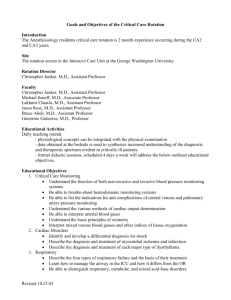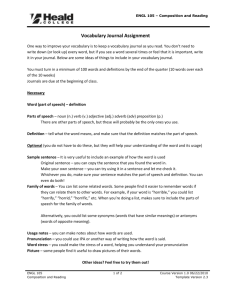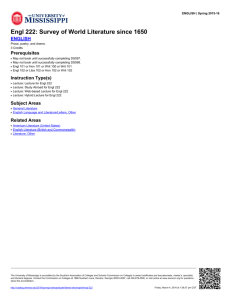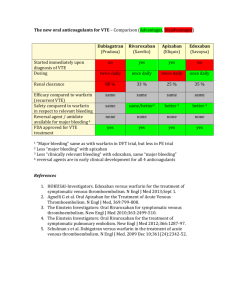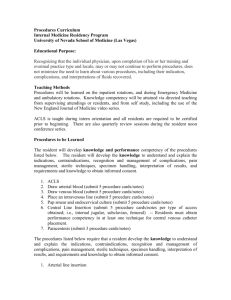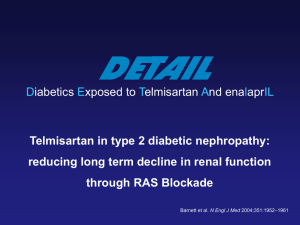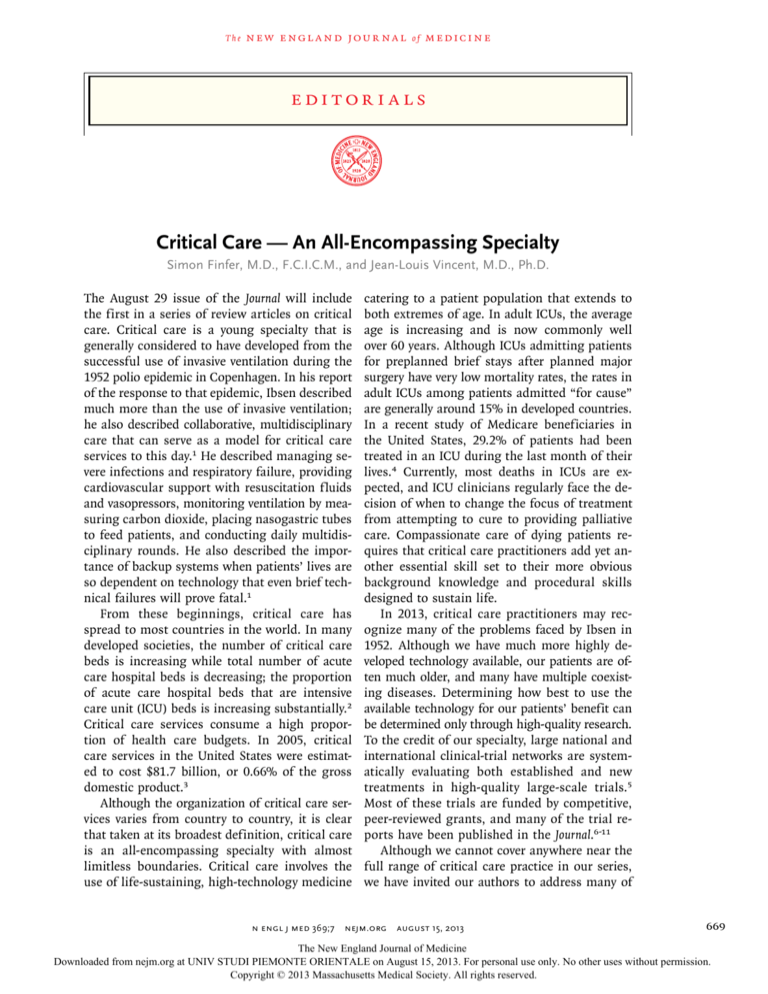
The
n e w e ng l a n d j o u r na l
of
m e dic i n e
edi t or i a l s
Critical Care — An All-Encompassing Specialty
Simon Finfer, M.D., F.C.I.C.M., and Jean-Louis Vincent, M.D., Ph.D.
The August 29 issue of the Journal will include
the first in a series of review articles on critical
care. Critical care is a young specialty that is
generally considered to have developed from the
successful use of invasive ventilation during the
1952 polio epidemic in Copenhagen. In his report
of the response to that epidemic, Ibsen described
much more than the use of invasive ventilation;
he also described collaborative, multidisciplinary
care that can serve as a model for critical care
services to this day.1 He described managing severe infections and respiratory failure, providing
cardiovascular support with resuscitation fluids
and vasopressors, monitoring ventilation by measuring carbon dioxide, placing nasogastric tubes
to feed patients, and conducting daily multidisciplinary rounds. He also described the importance of backup systems when patients’ lives are
so dependent on technology that even brief technical failures will prove fatal.1
From these beginnings, critical care has
spread to most countries in the world. In many
developed societies, the number of critical care
beds is increasing while total number of acute
care hospital beds is decreasing; the proportion
of acute care hospital beds that are intensive
care unit (ICU) beds is increasing substantially.2
Critical care services consume a high proportion of health care budgets. In 2005, critical
care services in the United States were estimated to cost $81.7 billion, or 0.66% of the gross
domestic product.3
Although the organization of critical care services varies from country to country, it is clear
that taken at its broadest definition, critical care
is an all-encompassing specialty with almost
limitless boundaries. Critical care involves the
use of life-sustaining, high-technology medicine
catering to a patient population that extends to
both extremes of age. In adult ICUs, the average
age is increasing and is now commonly well
over 60 years. Although ICUs admitting patients
for preplanned brief stays after planned major
surgery have very low mortality rates, the rates in
adult ICUs among patients admitted “for cause”
are generally around 15% in developed countries.
In a recent study of Medicare beneficiaries in
the United States, 29.2% of patients had been
treated in an ICU during the last month of their
lives.4 Currently, most deaths in ICUs are expected, and ICU clinicians regularly face the decision of when to change the focus of treatment
from attempting to cure to providing palliative
care. Compassionate care of dying patients requires that critical care practitioners add yet another essential skill set to their more obvious
background knowledge and procedural skills
designed to sustain life.
In 2013, critical care practitioners may recognize many of the problems faced by Ibsen in
1952. Although we have much more highly developed technology available, our patients are often much older, and many have multiple coexisting diseases. Determining how best to use the
available technology for our patients’ benefit can
be determined only through high-quality research.
To the credit of our specialty, large national and
international clinical-trial networks are systematically evaluating both established and new
treatments in high-quality large-scale trials.5
Most of these trials are funded by competitive,
peer-reviewed grants, and many of the trial reports have been published in the Journal.6-11
Although we cannot cover anywhere near the
full range of critical care practice in our series,
we have invited our authors to address many of
n engl j med 369;7 nejm.org august 15, 2013
669
The New England Journal of Medicine
Downloaded from nejm.org at UNIV STUDI PIEMONTE ORIENTALE on August 15, 2013. For personal use only. No other uses without permission.
Copyright © 2013 Massachusetts Medical Society. All rights reserved.
The
n e w e ng l a n d j o u r na l
the core issues faced in the ICU. Coming reviews will address the management of severe
sepsis, the choice and use of resuscitation fluids,
and the treatment of shock. In addition, they
will address newer issues that are a product of
our success in supporting older, sicker patients
through longer stays in the ICU — problems
such as the management of delirium, ICU-­
acquired weakness, and recovery from prolonged
critical illness.
In preparation for the start of the series, we
have posted a case at NEJM.org that highlights
issues raised in the review article on sepsis, the
first in the series. As the series progresses, each
installment of the case will be accompanied,
2 weeks before publication of the review article,
by questions about the diagnosis or management
of the condition to be explored in that month’s
critical care review article. We encourage you to
follow the case and tell us how you would manage the patient’s treatment. We will post the results of the online polling to coordinate with
publication of the actual review article.
Disclosure forms provided by the authors are available with
the full text of this article at NEJM.org.
From the George Institute for Global Health and Royal North
Shore Hospital, University of Sydney, Sydney (S.F.); and the Department of Intensive Care Medicine, Université Libre de Bruxelles, and the Department of Intensive Care, Erasme University
Hospital — both in Brussels (J.L.V.).
of
m e dic i n e
1. Ibsen B. The anaesthetist’s viewpoint on the treatment of
respiratory complications in poliomyelitis during the epidemic
in Copenhagen, 1952. Proc R Soc Med 1954;47:72-4.
2. Halpern NA, Pastores SM, Greenstein RJ. Critical care medicine in the United States 1985-2000: an analysis of bed numbers,
use, and costs. Crit Care Med 2004;32:1254-9.
3. Halpern NA, Pastores SM. Critical care medicine in the United
States 2000-2005: an analysis of bed numbers, occupancy rates,
payer mix, and costs. Crit Care Med 2010;38:65-71.
4. Teno JM, Gozalo PL, Bynum JP, et al. Change in end-of-life
care for Medicare beneficiaries: site of death, place of care, and
health care transitions in 2000, 2005, and 2009. JAMA 2013;
309:470-7.
5. Cook D, Brower R, Cooper J, Brochard L, Vincent JL. Multicenter clinical research in adult critical care. Crit Care Med
2002;30:1636-43.
6. Hébert PC, Wells G, Blajchman MA, et al. A multicenter,
randomized, controlled clinical trial of transfusion requirements in critical care. N Engl J Med 1999;340:409-17. [Erratum,
N Engl J Med 1999;340:1056.]
7. The SAFE Study Investigators. A comparison of albumin and
saline for fluid resuscitation in the intensive care unit. N Engl J
Med 2004;350:2247-56.
8. NICE-SUGAR Study Investigators. Intensive versus conventional glucose control in critically ill patients. N Engl J Med 2009;
360:1283-97.
9. The Acute Respiratory Distress Syndrome Network. Ventilation with lower tidal volumes as compared with traditional tidal
volumes for acute lung injury and the acute respiratory distress
syndrome. N Engl J Med 2000;342:1301-8.
10. Young D, Lamb SE, Shah S, et al. High-frequency oscillation
for acute respiratory distress syndrome. N Engl J Med 2013;368:
806-13.
11. Ferguson ND, Cook DJ, Guyatt GH, et al. High-frequency
oscillation in early acute respiratory distress syndrome. N Engl J
Med 2013;368:795-805.
DOI: 10.1056/NEJMe1304035
Copyright © 2013 Massachusetts Medical Society.
A Role for Finasteride in the Prevention of Prostate Cancer?
Michael LeFevre, M.D., M.S.P.H.
All medical care should seek to achieve one or
more of these three goals: to relieve suffering, to
prevent future suffering, or to prolong life. Preventive services, by definition, are utilized to
prevent future suffering or prolong life. We
should offer preventive services when science assures us that across the population of patients
we serve, we do more good than harm.
How would we know if a preventive service
accomplishes one or more of these three goals?
All-cause mortality is the most appealing outcome in a prevention trial because it clearly reflects the goal of prolonging life, and it is not
subject to the difficulties of accurately assigning
a specific cause of death. All clinicians who
struggle with completing a death certificate can
670
identify with the challenge that researchers face
in the ascertainment of cause of death. But at
any specific age, most single diseases play a relatively small role in overall mortality. It is much
easier to demonstrate a reduction in diseasespecific mortality.
Prostate cancer is a logical target for a preventive service, with most of the public discourse about prostate-cancer prevention today
focusing on screening. Screening seeks to identify cancers in asymptomatic persons with the
hope of altering the natural history of those
cancers that are destined to cause suffering
without doing too much harm in the process. In
the multicenter Prostate, Lung, Colorectal, and
Ovarian Cancer Screening Trial1 conducted in
n engl j med 369;7 nejm.org august 15, 2013
The New England Journal of Medicine
Downloaded from nejm.org at UNIV STUDI PIEMONTE ORIENTALE on August 15, 2013. For personal use only. No other uses without permission.
Copyright © 2013 Massachusetts Medical Society. All rights reserved.




